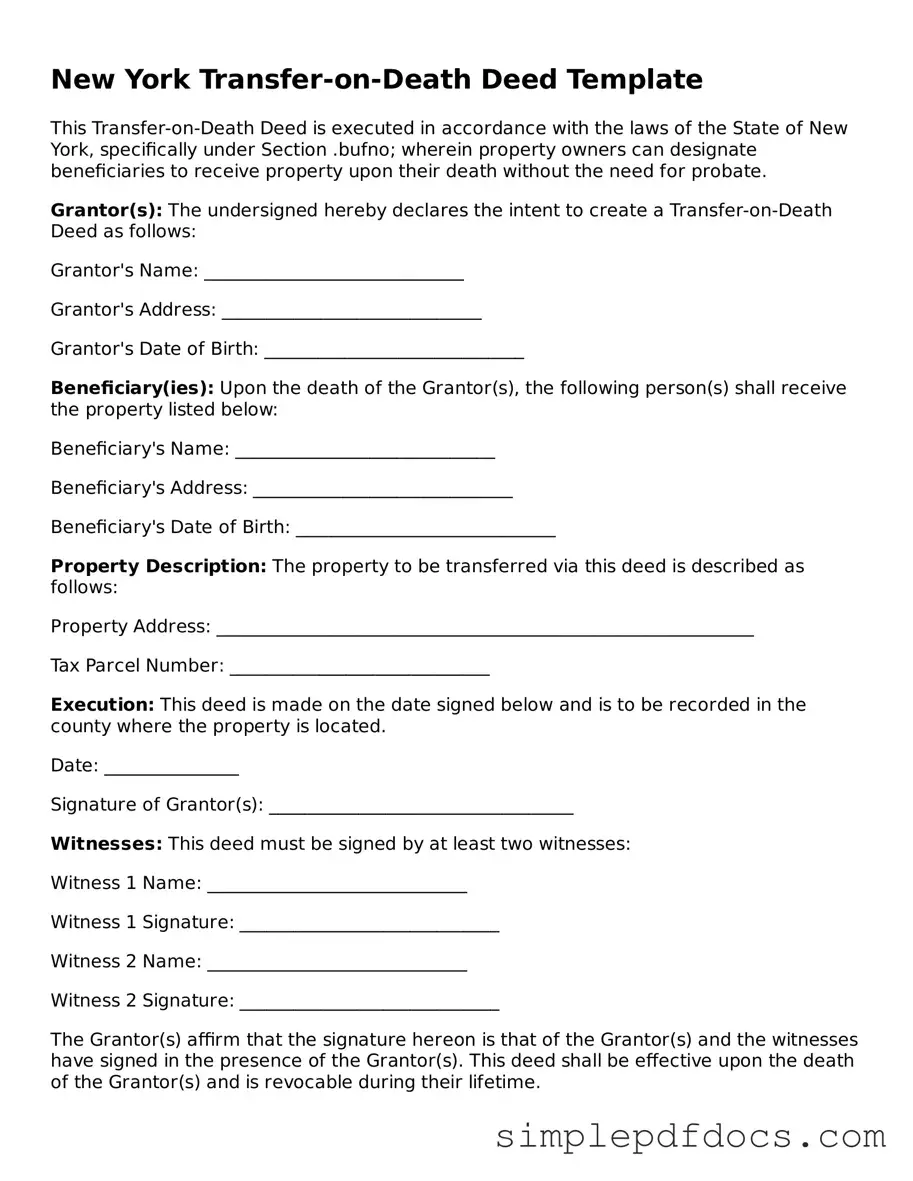Legal Transfer-on-Death Deed Document for the State of New York
The New York Transfer-on-Death Deed is a legal document that allows an individual to transfer real property to a designated beneficiary upon their death, bypassing the probate process. This form provides a straightforward way to ensure that property passes directly to heirs without the complications of estate administration. Understanding its implications and requirements is essential for anyone considering this option for estate planning.
Get Document Here
